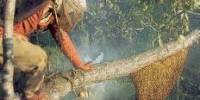What is medicinal plant?
“A medicinal plant is any plant which, in one or more of its organ, contains substance that can be used for therapeutic purpose or which is a precursor for synthesis of useful drugs.” This definition of Medicinal Plant has been formulated by WHO (World Health Organization).
The plants that possess therapeutic properties or exert beneficial pharmacological effects on the animal body are generally designated as “Medicinal Plants”. Although there are no apparent morphological characteristics in the medicinal plants growing with them, yet they possess some special qualities or virtues that make them medicinally important. It has now been established that the plants which naturally synthesis and accumulate some secondary metabolites, like alkaloids, glycosides, tannins, volatiles oils and contain minerals and vitamins, possess medicinal properties.
Medicinal plants constitute an important natural wealth of a country. They play a significant role in providing primary health care services to rural people. They serve as therapeutic agents as well as important raw materials for the manufacture of traditional and modern medicine. Substantial amount of foreign exchange can be earned by exporting medicinal plants to other countries. In this way indigenous medicinal plants play significant role of an economy of a country.
Medicinal plants of Bangladesh that effect in reproductive system:
In Bangladesh there are many medicinal plants that effect in reproductive system. Some of them are given below:
I. HYPTIS SUAVEOLENS (Linn) Poit.
II. ABROMA AUGUSTA Linn.
III. ACACIA NILOTICA (Linn) Bel.
IV. ALOE INDICA Linn.
V. BASELLA ALBA Linn.
VI. CELOSIA ARGENTEA Linn.
VII. LITSEA GLUTINOSA (Lour) Rob.
VIII. SIDA CORDIFOLIA Linn.
IX. TRAPA BISPINOSA Roxb.
X. WITHANIA SOMNIFERA Dunal.
XI. SARACA ASOCA (Roxb) De Wilde.
XII. PERGULARIA DAEMIA (Forsk) Chiov.
HYPTIS SUAVEOLENS (Linn) Poit.
(Fam. Labiatae)
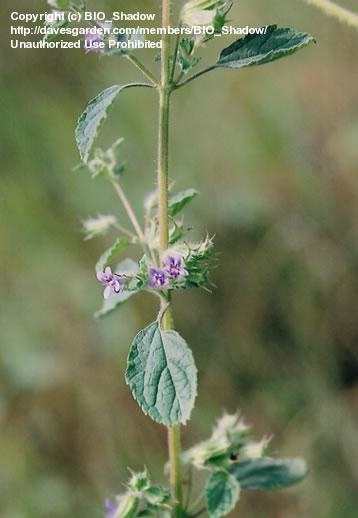
Common names: Tokma, Ganja Tulsi.
Local name: Bilati Tulsi.
Habitat and distribution: A bushy erect herb with fragrant hairy cordate, opposite leaves, hairy stems, and small flowers in axillary and terminal cymes and small black mucilaginous seeds grow in all parts of the country.
Duration: Annual Perennial.
Size and shape: Strong-scented herb to 1.5 m tall with quadrate hairy stems and ovate to obovate leaves 3-5 cm long and 2-4 cm wide, the margins serrulate, lower surface densely hairy; petioles up to 3 cm long. Flowers in small cymes along branch ends with reduced leaves. Calyx 5 mm long in flower, 10 mm long in fruit, ribbed. Corolla blue. Nutlets about 1.2-1.5 mm long slightly notched at the end.
Usable parts: leaves, flowers, roots.
Pharmacological Action; Stimulant, carminative.
Chemical constituents: Leaves, twigs and flowera yield an essential oil containing beta-caryophyllenes, cineol, terpenol, alpha-bergamotene, sabinene, menthol, l-sabinene, d-limonene, and azulenic sesquiterpenes. Leaves and flowers also contain campesterol and fucosterol. Roots contain beta-sitosterol, oleanolic acid. Seeds contain anti-A haemagglutinin.
Properties and uses: Plant is stimulant, carminative, sudorific and lactagogue, infusion is used in catarrhal conditions, colic, atomachache, parasitic skin diseases and affections of the uterus. It showed 100% anti-implanation activity in female rats. Leaf juice is antispasmodic and antirheumatic and is used in cancers and tumours. Seeds soaked in water with added sugar or molasses make a cooling and refreshing drink.
ABROMA AUGUSTA Linn.
(Fam. Sterculiaceae)
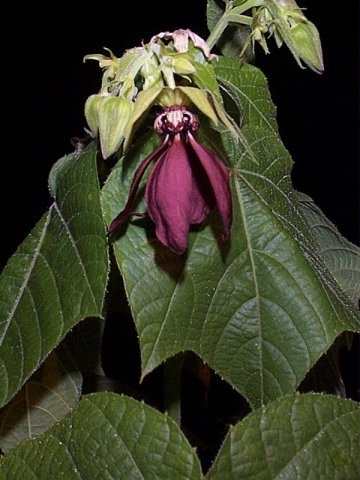
Common names: Devil’s Cotton
Local name: Ulatkambal.
Habitat and distribution: A strangling shrub with large broadly ovate petiolate leaves, and
showy, deep-scarlet flowers, grows wild and is also planted in gardens throughout the country.
Duration: In the greenhouse, plants bloom from late spring to early summer. Dark maroon flowers are formed in terminal panicles.
Size and shape: They will reach 10 feet (2.5 m) in height with very little spread. The leaves will reach 8 inches (20 cm) across and are 3-5 lobed with very distinct palmate veins. The leaves and stems are covered with soft bristly hairs that are very irritating to the touch. The bark yields a jute-like fiber.
Usable parts: Leaf, root, leaf stalks.
Pharmacological Action: Diuretic, Resolvent, Uterine Tonic.
Chemical constituents: Leaves contain taraxerol, its acetate and beta-sitosterol. Stem bark contains friedelin and beta-sitosterol. Root and root bark contain gum, fixed oil, resin, alkaloids, abromine, choline and betaine, beta-sitosterol, stigmasterol, digitonige and magnesium salts of hydroxyl acids. Seeds contain a fixed oil with 71.5% linoleic acid. Augustic acid, an oleaname derivative and a stigmasterol glycoside have been isolated from the roots.
Properties and uses: Leaves and stems are demulcents. Root bark is emmenagogue, uterine tonic and is used in dysmenorrhoea. In fusion of leaves and stems is very effective uterine tonic, regulates irregular menses and pain, efficacious in gonorrhoea. Root bark is used in amenorrhoea. Dysmenorrhoea and other menstrual disorders and act as uterine tonic. The root bark also possesses antifertility and antibacterial activity. Leaf stalks are useful in dysentery, weakness and burning urination.
BASELLA ALBA Linn.
(=Basella rubra Linn.)
(Fam. Basellaceae)
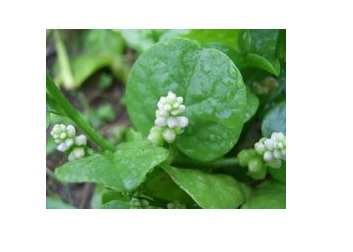
Common names: Indian Spinach (eng.)
Local names: Puishak (Beng.)
Habitat and distribution: A soft, smooth, climbing plant with succulent, waxy, ovate-oblong leaves, soft square green or reddish stems and small round fruits in clusters cultivated as a popular vegetable plant throughout the country.
Duration: Annual Perennial.
Size and shape: 10 m in length. Its thick, semi-succulent, heart-shaped leaves.
Usable parts: Stems, leaves.
Pharmacological Action: Demulcent and diuretic.
Chemical constituents: Various parts of the plant contain mucilage (a water soluble polysaccharide), vitamin A and B, ascorbic acid, protein, fats, sterols and minerals. The betacyanins, gomphrenins 1 and 2, isogomphrenins 1 and 2, gomphrenin 3 and their derivatives are present in the juice of the plant. Spinacosides C and D have been isolated from the aerial parts.
Properties and uses: Plant is a demulcent and diuretic. Leaf juice is used to relieve constipation. Leaves are used as a poultice for sores. To hasten suppuration of boils and in urticaria. Catarrh, syphilitic ulcer in nose, gonorrhoea and balanites. Roots are rubefacient and used as poultice to local swellings and the sap in acne. A decoction of the root is given to stop bilious vomiting and intestinal complaints.
CELOSIA ARGENTEA Linn.
(=Celosia coccinea Linn.)
(Fam. Amaranthaceae)

Common names: Cock’s Comb, quail grass (eng.)
Local names: Moragphul, Murga (Beng.)
Habitat and distribution: A glorious. Erect annual herb with alternate petioled leaves, white, glistening flowers in dense terminal and axillary spikes, grows in Dhaka and Chittagong districts.
Duration: These plants are of tropical origin, they do grow best in full sunlight. The flowerheads can last up to 8 weeks, and further growth can be promoted by removing dead flowers.
Size and shape:Height up to three feet and spread about one foot.
Usable parts: Leaves, roots, stalks, flowers.
Pharmacological Action:Anti-inflammatory
Chemical constituents:The plant contains hyaluronic, tetracosanoic, stearic, palmitic, octacosanoic and betulinic aids, beta-sitosterol. Tinosporin, n-hentriacontane, petulin, lupeol, ceryl alcohol, ancistrocladine, raponone, stigmasterol, luteolin, mannitol, hordenine, proteins, vitamins and minerals. Seeds contain a fixed oil. Two rare isoflavones have been isolated from the aerial parts.
Properties and uses: Seeds are useful in diarrhea, blood diseases, mouth sores and diseases of the eyes. They are also used in seminal diseases. Ethanolic extract of the plant possesses anti-pritozoal and apasmolytic properties.
SIDA CORDIFOLIA Linn.
(Fam. Malvaceae)

Common names: Country Mallow (Eng.)
Local names:Brea. Baal (Beng.)
Habitat and Distribution: An annual or perennial under shrub with long branches, rooting at the nodes, cordate leaves and yellow flowers, grows naturally in Dhaka, Chittagong, and Chittagong Hill Tracts and occasionally in other places.
Duration: perennial
Size and shape: An erect under shrub, upto 1m. Tall. Stem ascending, terete or sulcate, softly villious and densely stellate-pubescent all over. Leaves ovate or ovate-oblong, obtuse or subacute at apex. Flowers yellow, peduncles, axillary, jointed much above the panicles, upper flowers nearly sessile and fasciculate towards the tip of the branches forming subspicate inflorescence.
Usable parts: Roots and seeds.
Pharmacological Action: Tonic, astringent, emollient and aphrodisiac.
Chemical constituents: Various parts contain alkaloids. The principal one being ephedrine, seeds containing the highest percentage. They also contain fatty oil. Phytosterol, mucus, resins, resins, acids and potassium nitrate. Aerial parts also contain saturated hydrocarbons, higher fatty acid esters, beta-sitosterol and higher fatty acids including palmitic, stearic and hexacosanoic acids.
Properties and Uses: Decoction of root with ginger is used as a febrifuge. Powdered root bark. With milk and sugar, is given for the relief of frequent micturition and sciatica. Juice of root is used for healing wounds. Seeds are aphrodisiac, and used in gonorrhea. Colic and tenesmus. Juice of leaves is given in spermatorrhoea, gonorrhea and rheumatism. The long chain hydrocarbons present in the plant are active against both gram-positive and gram-negative bacteria.
TRAPA BISPINOSA Roxb.
(=Trapa natans Linn.)
(Fam. Trapaceae)
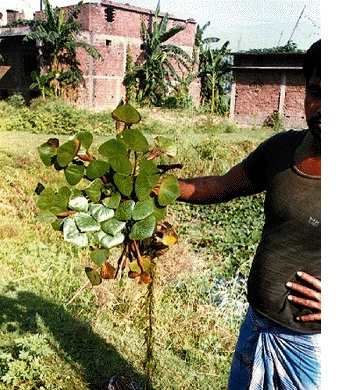
Common names: Water Chestnut (Eng.)
Local name: Paniphal (beng.)
Habitat and Distribution: An aquatic plant with floating rhomboid leaves, small white flowers and spiny triangular-ovoid fruits (bony nuts), grows commonly in ponds and jheels all over the country.
Duration: Perennial
Size and shape: The reddish green leaves are villous on the dorsal side, and 6-8 cm in size. The plant stem remains in the water and has one node of about 3-5 cm in thickness.
Usable parts: root, stem, leaves.
Pharmacological Action: For the cure of elephantiasis, rheumatism, sores and sunburn.
Chemical constituents: Fruits contain proteins, fats, starch, sugars and manganese. Leaves contain tannins. Stems and roots have high concentration of Mn. Fe. Cu and Cr. The plant also contains nitrogenous substances.
Properties and Uses: Starchy fruits are nutritive, tonic and cooling. Fruits are used in the treatment of diarrhea and bilious affections. Mixed with milk. The plant is given in general debility, seminal weakness and leucorrhoea.
WITHANIA SOMNIFERA Dunal.
(Fam. Solanaceae)
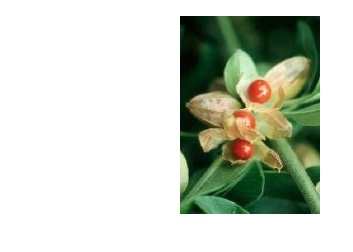
Common names: Winter Cherry (Eng.)
Local names: Ashwagondha, Dhuppa (Beng.)
Habitat and Distribution: An erect perennial shrubby plant with ovate leaves. Cluster of small flowers and ovoid fruits at the nodes and in the axils of leaves and tuberous roots, found to grow wild in the northern districts.
Duration: Perennial
Size and shape: It grows as a stout shrub that reaches a height of 170cm.
Usable parts: Root.
pharmacological Action: Adaptogen, sedative.
Chemical constituents: The plant is very rich in tropane alkaloids and steroidal lactones, withanolides. Roots contain tropine, psedotropine, tigloyloxytropine, choline, anafrin, pelletierine, isopelletierine, anahygrine and cuscohygrine. The roots also contain nicotine, somniferine, somniferinine, withaferin A and B, withasomidienone, sominone, sominolide, beta-sitosterol, sugar and acidic compounds including about 8 steroidal lactones. Five new withasomniferabolide, somniferanolide and somniwithanolide, have been isolated from the stem bark.
Properties and Uses: This is an official sedative drug in the Indian pharmacopoeia. The root finds extensive use in all cases of general debility, consumption, senile debility, rheumatism, nervous tension loss of memory and muscular energy. Both roots and leaves are alternative, tonic, diuretic, deobstruent, astringent, aphrodisiac and nervine sedative. They are used in the treatment of headache, convulsions, insomnia, hiccup, coughs, rheumatism, dropsy, seminal weakness and mouth sores. Bruised leaves and ground roots are applied locally for painful swellings, carbuncles and ulcers. Fruits and seeds are diuretic and hyonotic. Aqueous extract of the seeds has been shown to be useful in regulation of metal-induced clinical toxicity. Oral administration of the plant extract produced significant anti-inflammatory effect on chrinic inflammatory reaction in rats. Alcoholic extract of he root and withaferin A show significant anti-tumour activity.
SARACA ASOCA (Roxb) De Wilde.
(=Saraca indica Linn.)
(Fam. Caesalpiniaaceae)
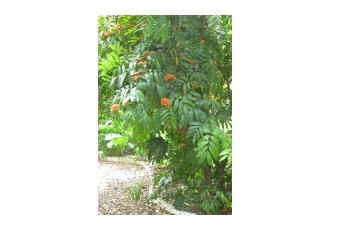
Common names: Ashoka (Eng.)
Local names: Ashok, Anganaparia (Beng.)
Habitat and Distribution: A moderate-sized tree with parpinnate compound leaves and racemose handsome flowers in condensed panicles, and flattened, oblong almost woody pods, planted on roadsides in many areas of the country.
Duration: Perennial
Size and shape:A small evergreen tree. The leaves are paripinnate and the leaflets 6-12, oblong and rigidly sub-coriaceous. The flowers are orange or orange-yellow, eventually turning vermillion, very fragrant, in dense axillary corymbs; the pods, flat, leathery, the seeds, 4-8, ellipsoid-oblong and compressed.
Usable parts: Bark, leaves, root
Pharmacological Action: Antitumour and anticarcinogenic.
Chemical constituents: Bark contain haematoxylin, tannins, catechol, catechin, epicatechin, a crystalline galactoside, a ketosterol, a saponin, an organic calcium salt, an organic substance containing iron and a large number of minerals. It also contains a powerful oxytocic principle.
Properties and Uses: Bark is strongly astringent and uterine sedative, and used especially in menorrhagia, in bleeding haemorrhoids and haemorrhagic dysentery, bark also cures biliousness, dyspepsia, dysentery, colic, piles, ulcers and pimples, leaves posses blood-purifying property, and their uice, mixed with cumin, is used in stomachache. Flowers are useful in biliousness, syphilis and haemorrhagic, dysentery, and constitute an excellent uterine tonic. (+Epicatechin present in the bark produces antitumour and anticarcinogenic activity in mice.
PERGULARIA DAEMIA (Forsk) Chiov.
(Fam. Asclrpiadaceae)
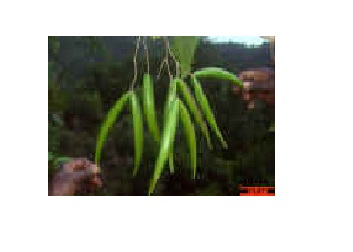
Common names: Chhagalbati
Local names: Chhagalbati, Chhagulbanti, Dudhi Lata (Beng.)
Habitat and Distribution: A perennial pubescent twining climber with milky latex, hirsute stems, broadly ovate-cordate leaves, small greenish white flowers and paired spiny follicles, grows wild in almost all districts.
Duration:Annual perennial.
Size and shape:A slender foul smelling perennial milky twining herb with hispid stems; leaves simple, opposite, suborbicular, cordate, acuminate, velvety pubescent beneath, margins ciliate; flowers greenish yellow or dull white tinged with purple, in axillary long peduncled umbellate or corymbose clusters; fruits relfexed follicles with long beak and soft spines, seeds many, ovate, truncate at the apex, densely velvety-pubescent on both sides.
Usable parts; Whole plant.
Pharmacological Action:The plant is astringent, acrid, thermogenic, emetic, expectorant, emenagogue, anthelmintic, antipyretic and laxative
Chemical constituents: Leaves and roots contain an alkaloid. Daemine. The plant also contains a bitter glucoside, terpenoids, sterols, alpha-amyrin, alpha-amyrin acetate, beta-amyrin, lupeol, lupeol acetate, beta-sitosterol, hentriacontane, betaine and different polypeptides. Numerous cardenolides are present in the stalks. Uzarogenin. Coroglaucigenin and other cardenolides as well as calotropin and calotropagenin are present in the seeds. The plant also contains 24% inorganic salts-KNO3 and KCL. The plant also contains a bitter resin. Two bitter principles and a glucoside possessing physiological action similar to pitutrin and several sterols.
Properties and Uses: Plant is expectorant. Diuretic and emetic. It is prescribed as a treatment for bronchitis and asthma and as a means to curtail heavy menstrual or non-menstrual uterine bleeding. Extract is used for uterine and menstrual troubles and to facilitate parturition. Juice of leaves is useful in asthmatic affections, infantile diarrhea and is also used to treat rheumatism. Paste of leaves is used as a poultice in carbuncle. Leaf juice is also useful in amenorrhoea and dysmenoeehoea. Root bark is used as a purgative in rheumatic cases.
LITSEA GLUTINOSA (Lour) Rob.
(Fam. Lauraceae)
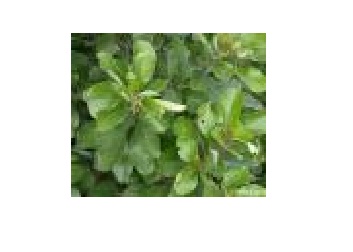
Common name: Tallow Laurel (Eng.)
Local name: Kukur-Chita (Beng.)
Habitat and Distribution: A small evergreen tree with thick oriaceous elliptic-obovate short-period leaves and small flowers in axillary cymes, grows wild in the forests of Chittagong and sylhet districts, and occasionally planted in most areas of the country.
Duration:Annual perennial
Size and shape: Moderately-sized tree; bark thin, grey or pale brown; live bark 3 mm thick, pale brown, very slimy.
Usable parts:Leaves, bark, seeds.
Pharmacological Action;Antispasmodic and emollient.
Chemical constituents: Leaves and bark are ric h in mucilage and contain an alkaloid, laurotetanine, which causes titanic spasm in animals. Seeds yield a fatty oil whi ch is a rich source of lauric acid. The essential oil of the fruits contains more than 40 compounds of which beta-ocimene occurs in high proportion. Other predominant ones include caryophyllene oxide and beta-caryophyllene.
Properties and Uses: Leaves are mucilaginous and considered antispasmodic and emollient, and used in colic, impotence and as a poultice. Bark is employed as demulcent and mild astringent in diarrhea and dysentery and as aphrodisiac, anodyne and local antidote to bites of venomous animals. Freshly powdered bark is used as an emollient application to bruises and as a styptic dressing for wounds. Seed oil is used in rheumatism.
ACACIA NILOTICA (Linn) Bel. (=Acacia arabica (LAM.) Willd)
(Fam. Mimosaceae)
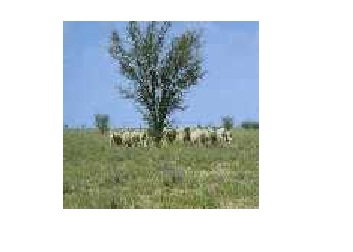
Common names: Indian gum-arabic tree, Babul tree(Eng.)
Local names: Babla, Kata Bangla, Kikar (Beng.)
Habitat and Distribution: A small thorny tree with small compound leathery leaves, hard, rust-brown bark and small, bright yellow, mimosaceous globose flowers, grows wild in Rajshahi, Pabna, Bogra, Kushtia, Jessore and Faridpur districts.
Duration: Annual perennial.
Size and shape: Small tree, 2.5–14 m tall, quite variable in many aspects
Usable parts: Whole plant.
Pharmacological Action: Astringent, demulcent and hypoglycaemic
Chemical constituents: The plant yields a gum containing arabin as the chief constituent. Other constituent of the gum include tannic and galic acids, cresol (an antiseptic), methyl salicylate, complex salts of calcium, magnesium and potassium, galactose, l-arabinose, l-rhamnose and 4-aldobiuronic acids. Bark of stem and leaves, root, pods and heartwood contain polyphenols, tannins, galic acid; octacosanol, betulin, flavonoids, alpha-amyrin and beta-sitosterol. Enzymes like oxidases and pectinases also occur in the wood.
Properties and Uses: Bark is astringent, demulcent and hypoglycaemic, cooling and anthelmintic, cures skin diseases and bleeding piles; gum, styptic, tonic and astringent, stops bleeding and urinary and vaginal discharges, also useful in diabetes. Ethenolic extract of bark is antiprotozoal, hypotensive and spasmolytic. Decoction of leaves and lotions of bark are used as a gargle for bleeding gums, sore throat and mouth wash, eye wash for conjunctivis, wash for eczema, cancerous and syphilitic affections and in cystitis, vaginitis, gonorrhoea, leucorrhoea and piles. Gum and tender leaves are used in diarrhoea, dysentery, diabetes mellitus, and sexual debility. Pods are expectorants, used in impotency and effective in uro-genital disorders.
ALOE INDICA Linn.
(Fam. Liliaceae)

Common name: Indian Aloe (Eng.)
Local name: Ghritakumari (Beng.)
Habitat and Distribution: It is occasionally found to grow wild as well as planted in gardens in many areas of the country.
Duration: Annual perennial.
Size and shape: Aloe plants are characterized by stemless large, thick,fleshy leaves, lance shaped, sharp apex and a spiny margin.The colour of leaves varies from species to species – gray to bright green, chocolate brown to black.
Usable parts:Whole plant
Pharmacological Action: Purgative, anthelmintic and emmenagogue
Chemical constituents: It mainly contains emodin and hrysophanic acid, and resin, gum and volatile oil. It also contains aloin but isobarbaloin is almost absent. The three main pentoside constituents of aloe indica royle are barbaloin, isobarbaloin and ?-barbaloin. The other minor constituents isolated are volatile and nonvolatile oils,resin, gum, emodin, chrysophanic acid and traces of coumarin.
Properties and Uses:Juice of leaves in small doses act as tonic and stomachic, and in large doses as purgative, anthelmintic and emmenagogue.0 it is also useful in the treatment of piles, anal fissures, menstrual suppressions and burning during sexual ejaculation. Intravenous injection of extract of aloe increases the flow of hepatic bile in the anaesthetized dog. The duration of action is relatively long. The effect of the water and alcohol extract of the leaves in female rats showed 88% reduction in fertility. The effect of the aqueous extract was studied in Triton induced hyperlipidoemia in mondey.
Aloe Indica is used as an appetite-stimulant tonic in small doses and in larger doses as a purgative, and indirectly, emmenogogue and antheimintic in children. The leaf extract along with sugar is used in cough and colds. A sweet confection prepared from the pulp of the leaves is given in piles. The ayurvedic preparation Kumari Asava is used in several ailments such as general debility, cough, dyspnoea, asthma etc. It is also used in jaundice. With standard doses used in man, occasionally a laxative effect can occur.



